Places to visit in Sri Lanka
Explore Pearl of the Indian Ocean
Within a mere area of 65,610 kilometres lie 8 UNESCO World Heritage Sites, 1,330 kilometres of coastline – much of it pristine beach – 26 national parks showcasing an abundance of wildlife, nearly 500,000 acres of lush tea estates, 250 acres of botanical gardens, 350 waterfalls, 25,000 water bodies, to a culture that extends back to over 2,500 years.
Cultural & Heritage Sites
With a recorded history of more than 2500 years Sri Lanka has a rich heritage. There are 8 world heritage sites within the country which include; The hill capital Kandy, The sacred city of Anuradapura, The Dutch fort of Galle, The ancient city of Polonnaruwa, The rock fortress of Sigiriya, The golden rock temple of Dambulla, The beautiful Horton plains and The Singharaja rain forest. Apart from these famous sites there are hundreds of heritage sites in the island which are frequented by tourists.
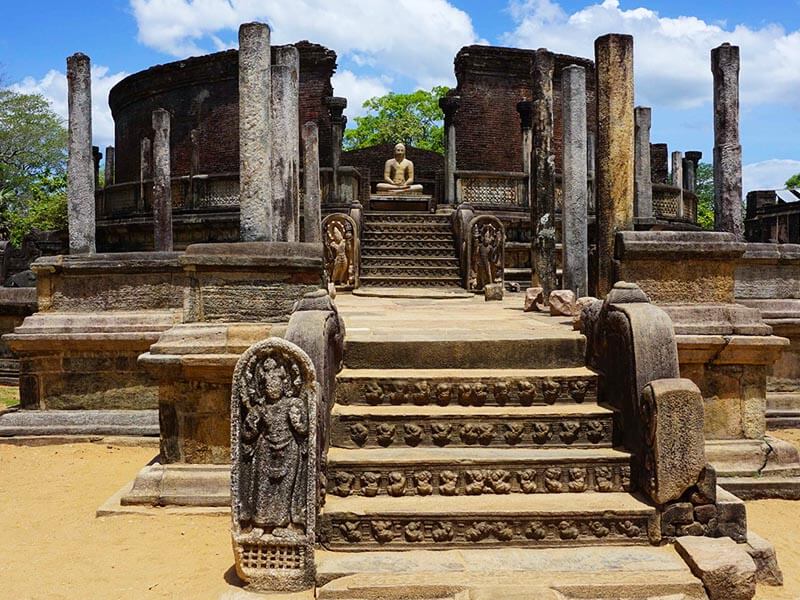
Ancient City of Polonnaruwa
Polonnaruwa is a testament to the discipline and greatness of the country’s mediaeval rulers and considered the best planned Archaeological relic sites in the country. The main attractions include a number of dagobas and other ruins dating back almost 1000 years. The draw card here however is Gal Vihara, a rock temple part of the Parakramabahu northern monastery. Polonnaruwa was flourishing self-sustained city with a superb irrigation system. The ancient city was declared a World Heritage Site by UNESCO in 1982.
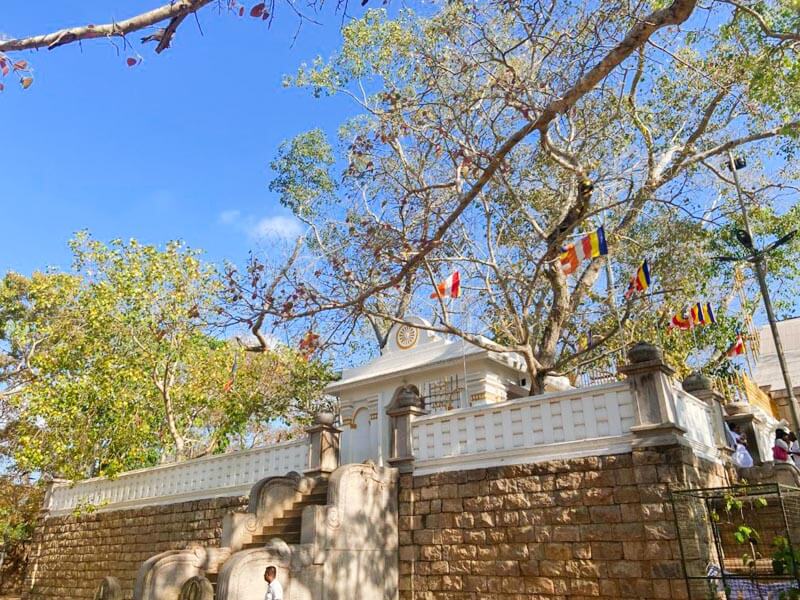
Sacred City of Anuradhapura
Anuradhapura is a major city in Sri Lanka. It is the capital city of North Central Province, Sri Lanka and the capital of Anuradhapura District. Anuradhapura is one of the ancient capitals of Sri Lanka, famous for its well-preserved ruins of an ancient Sri Lankan civilization. It was the third capital of the Kingdom of Rajarata, following the kingdoms of Tambapanni and Upatissa Nuwara. The city, now a UNESCO World Heritage Site, was the center of Theravada Buddhism for many centuries.
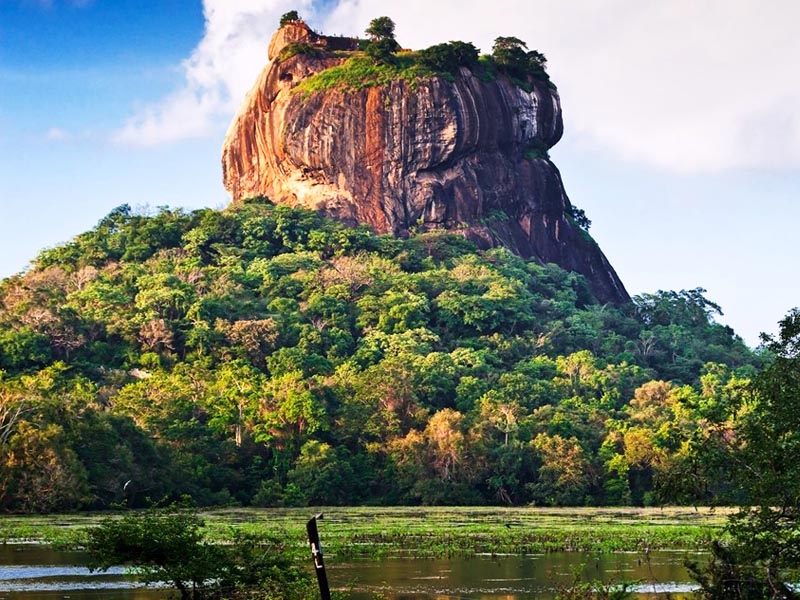
Sigiriya Rock Fortress
Sigiriya or Sinhagiri is an ancient rock fortress located in the northern Matale District near the town of Dambulla in the Central Province, Sri Lanka. Sigiriya today is a UNESCO listed World Heritage Site. It is one of the best preserved examples of ancient urban planning. The Sigiriya site contains the ruins of an upper palace located on the flat top of the rock, a mid-level terrace that includes the Lion Gate and the mirror wall with its frescoes, the lower palaces located behind the lavish lower gardens, and moats and ramparts which protected the citadel. The moats and walls that surround the lower palace are exquisitely beautiful.
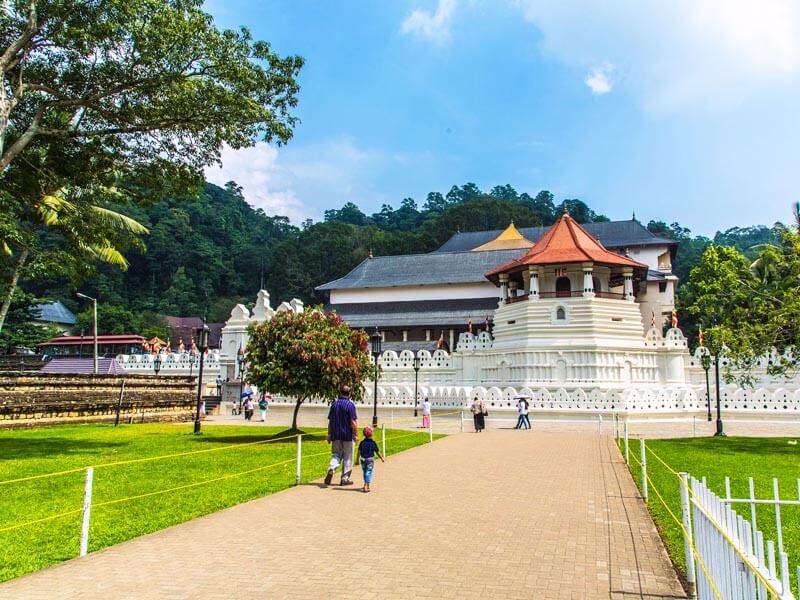
Sacred City of Kandy
Kandy is located in the mountainous and thickly forested interior of the island. The city is located in between multiple mountain ranges including the Knuckles mountain range and the Hanthana Mountain Range, giving the city an elevation of 500 metres (1,600 ft) above sea level. This sacred Buddhist site, popularly known as the city of Senkadagalapura, was the last capital of the Sinhala kings whose patronage enabled the Dinahala culture to flourish for more than 2,500 years until the occupation of Sri Lanka by the British in 1815. It is also the site of the Temple of the Tooth Relic (the sacred tooth of the Buddha), which is a famous pilgrimage site. It was declared a world heritage site by UNESCO in 1988.
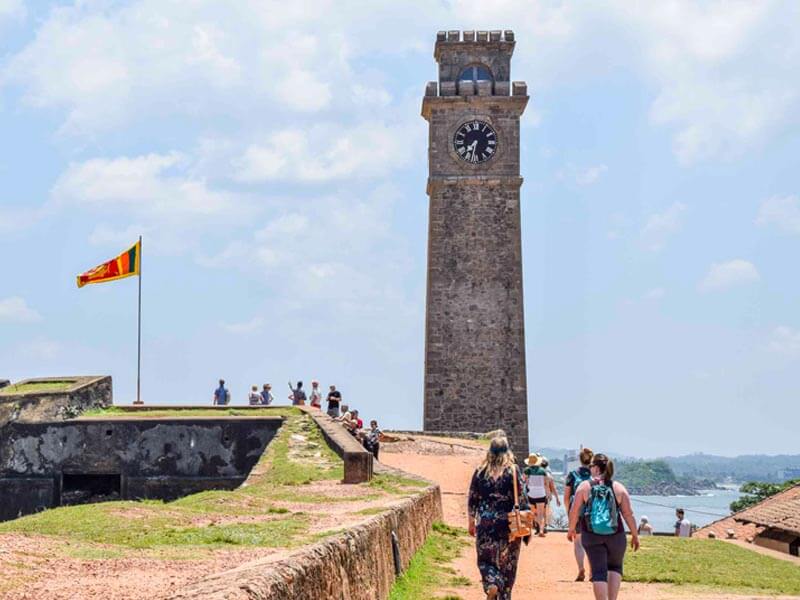
Old Town of Galle
Galle Fort, in the Bay of Galle on the southwest coast of Sri Lanka, was built first in 1588 by the Portuguese, then extensively fortified by the Dutch during the 17th century from 1649 on wards. The heritage value of the fort has been recognized by the UNESCO and the site has been inscribed as a cultural heritage UNESCO World Heritage Site under criteria iv, for its unique exposition of “an urban ensemble which illustrates the interaction of European architecture and South Asian traditions from the 16th to the 19th centuries.”
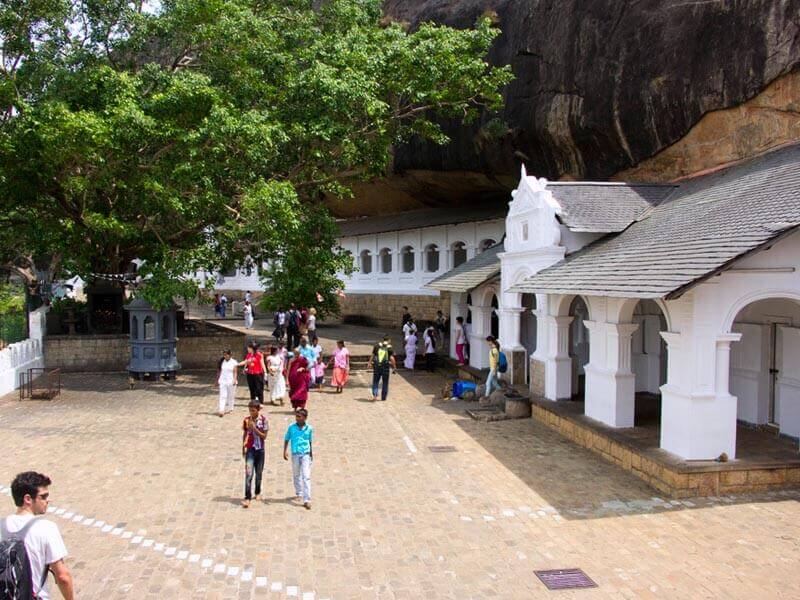
Rangiri Dambulla Cave Temple
Galle Fort, in the Bay of Galle on the southwest coast of Sri Lanka, was built first in 1588 by the Portuguese, then extensively fortified by the Dutch during the 17th century from 1649 on wards. The heritage value of the fort has been recognized by the UNESCO and the site has been inscribed as a cultural heritage UNESCO World Heritage Site under criteria iv, for its unique exposition of “an urban ensemble which illustrates the interaction of European architecture and South Asian traditions from the 16th to the 19th centuries.”
Exotic Beaches
An island Sri Lanka is surrounded by sea and a perfect destination for a beach holiday. When the seas are rough on one side of the island there is calm waters on the other side. So it is a year round beach destination.
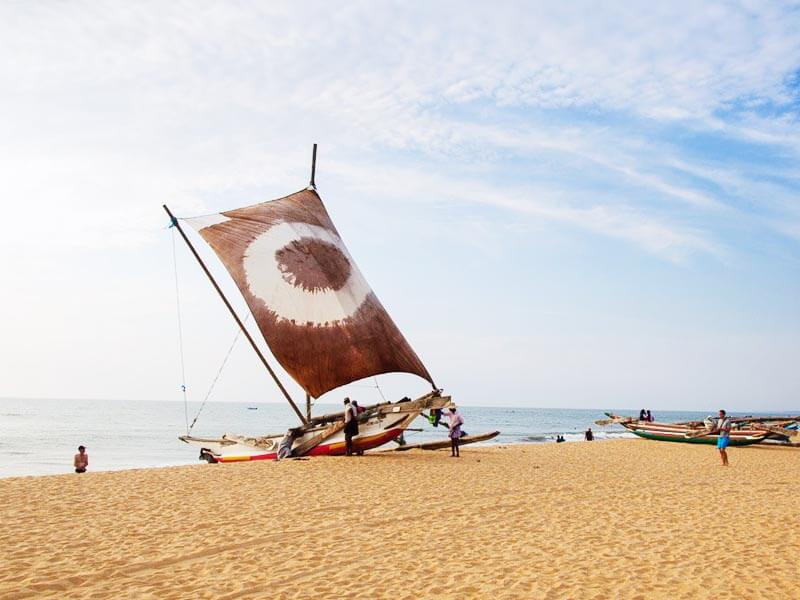
Negombo Beach
Negombo offers one of the best beaches on the west coast of Sri Lanka. It draws tourists who stop over for a day on their way to or from the airport. Some quiet stretches of the beach are maintained by the tourist hotels, while others are always busy with fishermen and their equipment. Water-sports and diving are popular among visitors, with a few well-preserved coral reefs and a 50-year-old shipwreck that can be seen in the distance also known as Kudapaduwa that serves as an artificial reef for many varieties of fish. Mora Wala (Mo-Ra-Wa-La) and Beach Park are very interesting places.
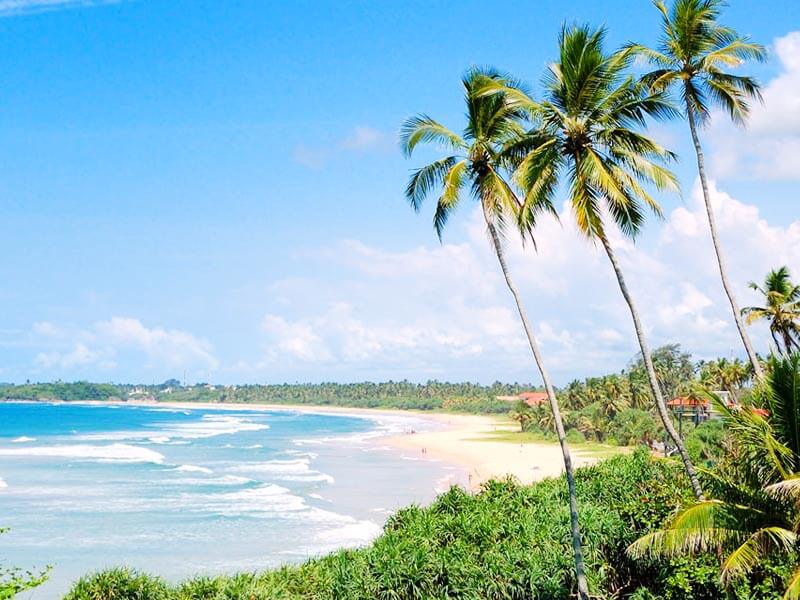
Bentota Beach
One of Sri Lanka’s most famous beaches, Bentota Beach has long been a favorite of tourists from around the world. Bentota is a tourist attraction, with handful and world-class hotels. It is a destination for water sports. Bentota also has a turtle hatchery, located on Induruwa beach. Sprawling under an endless canopy of palm trees, the beaches continue several kilometres south from Bentota.
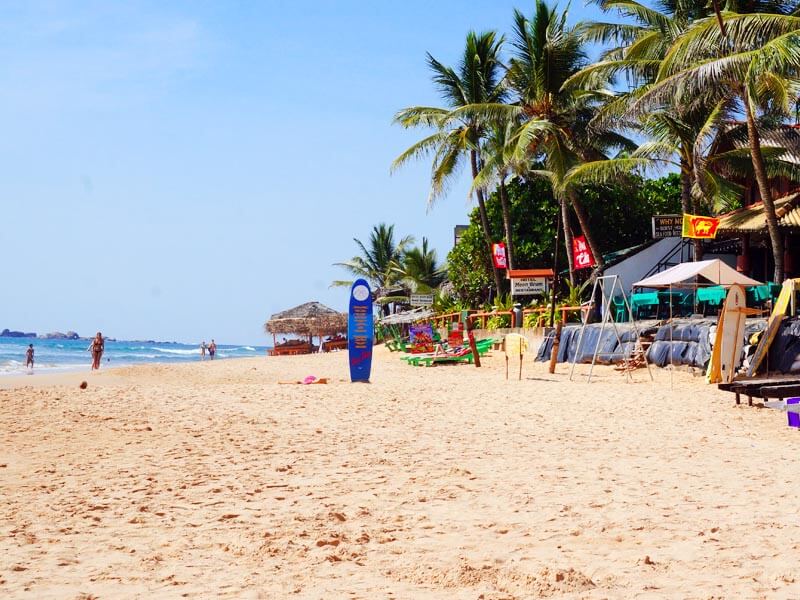
Hikkaduwa Beach
This fun coastal town 14 km from Galle was the first (1960’s) of Sri Lanka’s beautiful beaches to be discovered by tourists. Snorkeling and diving in the clear waters are the major past-time along this stretch and is the most environmentally friendly way to see the colorful fish that dart around. The coral sanctuary found on the coast of Hikkaduwa is a large shallow body of water enclosed by a reef, decorated with layers of multi colored corals; witch is home to countless number of colorful fish. Off the beach there is a collection of tine islets surrounded by beautiful coral formations. Many species of fish and large turtles are found here. There are more than four different shipwrecks for diving enthusiasts to explore along with dive shops offering PADI courses and equipment. Plenty of beachfront accommodation and a reputation as the second best surf spot in Sri Lanka by the international board-riding set, and the reason so many visit Hikkaduwa is blatantly clear.
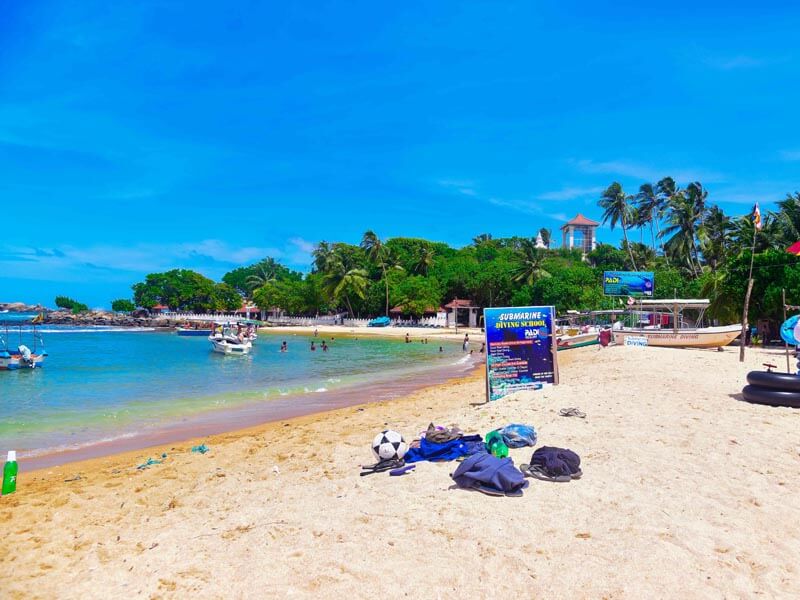
Unawatuna Beach
Unawatuna beach, a crescent shaped shallow beach situated further south to the famous town of Galle and its famous harbor and towering Roomassala Mountain. It is protected by a natural reef from the open sea and due to the semicircle shape of it forms a perfect natural swimming pool with aquamarine color gentle waves crashing on the golden sandy beach. The uniqueness of this beautiful beach cove is that given any time of the day one can get in to the shallow waters without fear of opening out to the open sea and also the level of water which keeps a natural gradient forming a shallow and a deep end on this natural swimming pool.
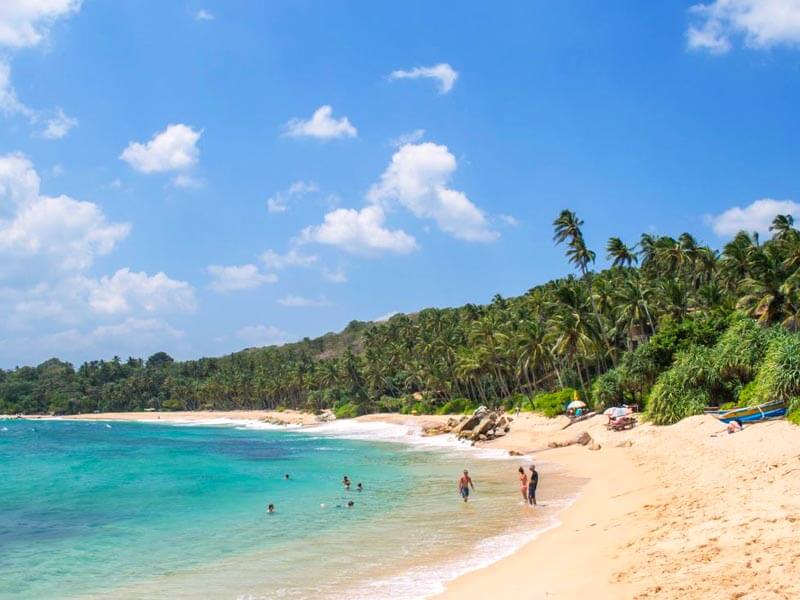
Tangalle Beach
Hidden deep in the southern coast, the beaches of Tangalle are made for the visual admirer. With the ocean set in dark blue and you with a fresh drink in your hand ready for a relaxing stay, then you would be in the right place. If you do fancy a spot of sea bathing then head west of Tangalle town to where a few naturally secured bays between rocky promontories caress calmer waters. Sunbathing on the other hand is recommend for the east part of town where the warm sandy beaches are far too irresistible to pass on a tan. November to April and May through October, for best climatic conditions.
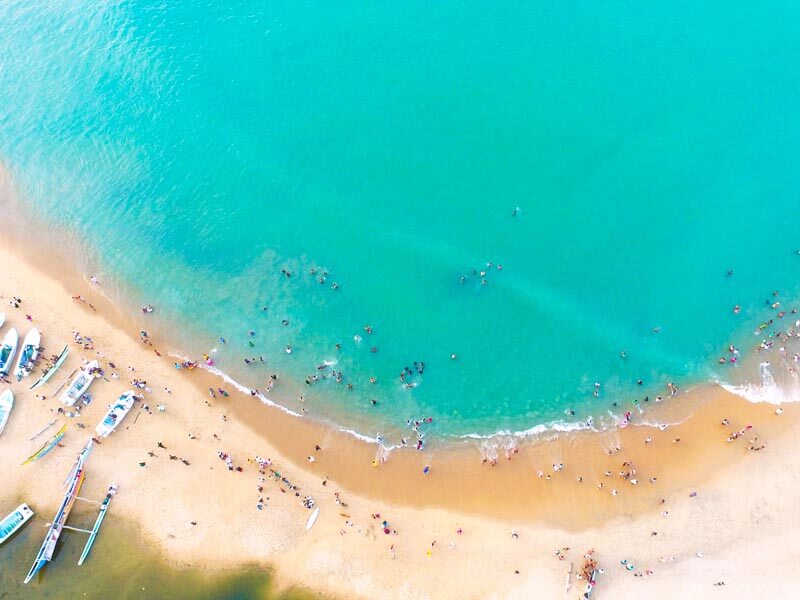
Arugam Bay Beach
Lovely Arugam Bay, a moon-shaped curl of soft sand, is home to a famed point break that many regard as the best surf spot in the country. It’s a tiny place, with a population of a few hundred, and everything is dotted along a single road which parallels the coast. The Arugam Bay area is home to a number of quality surf breaks, the most popular of which being ‘Main Point’ located towards the south of the bay. This is a right hand point break, with a rock/reef bottom, and has a number of sections with occasional barrels. Other breaks in the area include Whiskey Point and Pottuvil Point to the north, and Elephant Rock, Peanut Farm and Okanda to the south. These breaks have attracted a steady stream of international tourists for several decades.
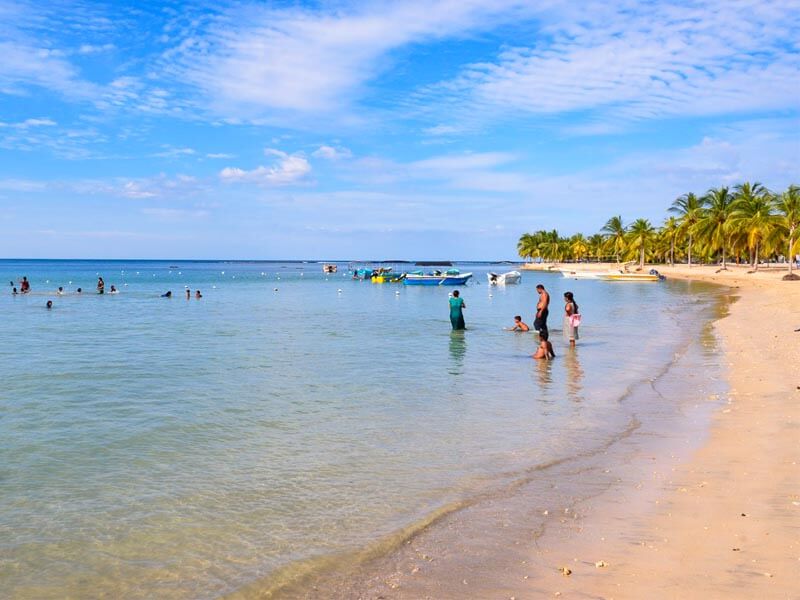
Pasikuda Beach
Pasikuda Beach, one of stunning beaches in Sri Lanka and in Asia, is located about 35km from the Batticaloa town, Eastern Province and placed between Kalkudah and Indian Ocean. This beach is a pleasant place with a golden bay, white sand, shallow water, coral reefs and palm trees. Able to walk 50 meters out to the sea is the significant attraction of this Pasikuda Beach. And it gives a safe swimming environment and many water sports can be enjoyed there. Some of water sports are kite surfing boogie boarding to surfing, snorkeling and sailing across in a canoe.
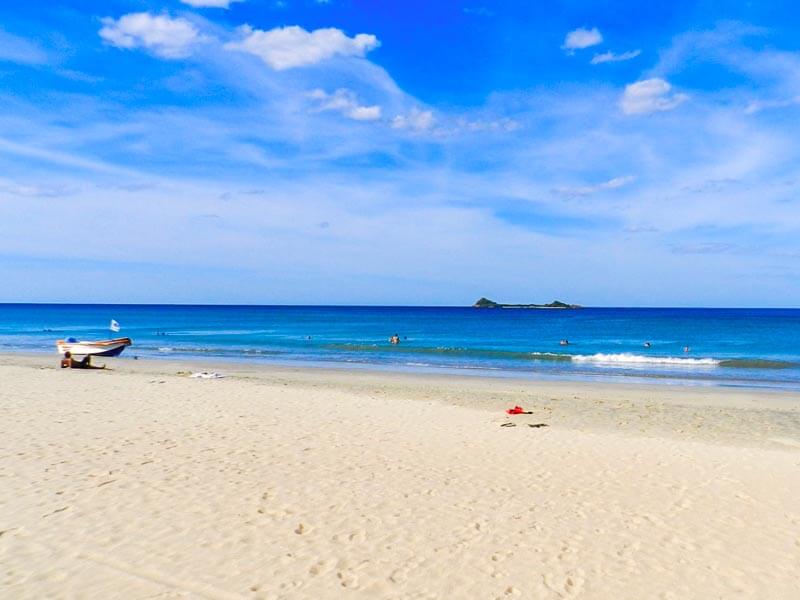
Nilaveli Beach
For years Nilaveli has been considered one of Sri Lanka’s most perfect beaches and also considered one of the purest white sand beaches in Asia. It certainly has that feeling of paradise-island remoteness, with plenty of bending palms swaying over the golden sand. Visiting Pigeon Island, going snorkeling in the nearby corals and dolphin watching are some of the activities available to you to do in your leisure time.
Natural & Scenic
Sri Lanka, is a small island in the Indian ocean of 65,000 square kilometers. Despite being also a small island has a wide range of geographic features and is rich in natural beauty. Large area of the country is covered in tropical forests, with hundreds of rivers flowing through them, often cascading in awesome waterfalls. Thousands of living creatures lives in this island and also there are the vivid bird sanctuaries which are belong to both endemic and visiting birds.
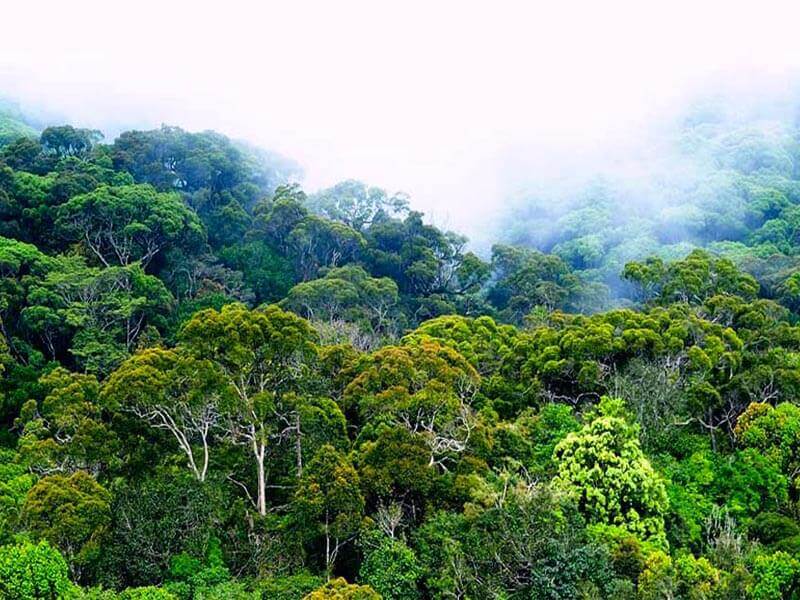
Sinharaja Rain Forest
Sinharaja Forest Reserve is a national park and a biodiversity hotspot in Sri Lanka. It is of international significance and has been designated a Biosphere Reserve and World Heritage Site by UNESCO. The hilly virgin rainforest, part of the Sri Lanka lowland rain forests Eco region was saved from the worst of commercial logging by its inaccessibility, and was designated a World Biosphere Reserve in 1978 and a World Heritage Site in 1988. The reserve’s name translates as Lion Kingdom.
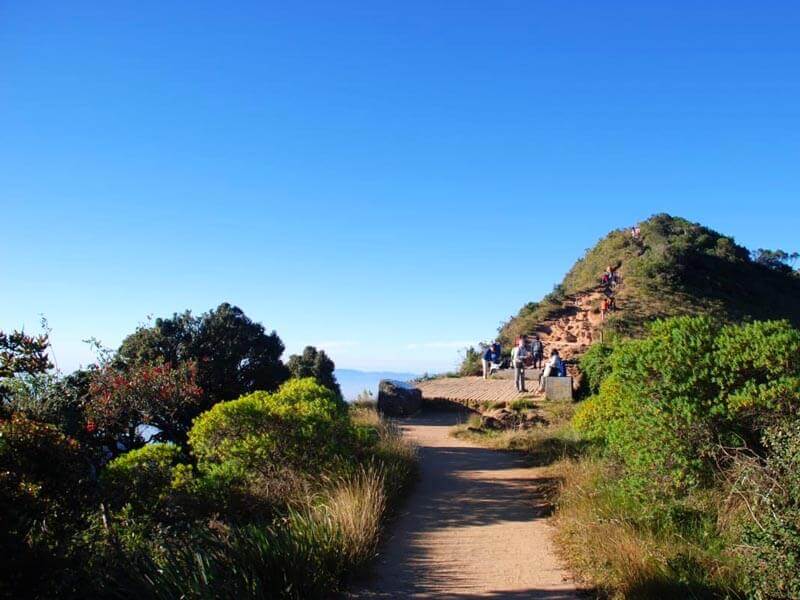
Horton Plains National Park & World's End
Horton Plains is a beautiful, silent, strange world with some excellent hikes in the shadows of Sri Lanka’s second and third highest mountains, Kirigalpotta (2395m) and Totapola (2359m). The ‘plains’ themselves form an undulating plateau over 2000m high, covered by wild grasslands and interspersed with patches of thick forest, rocky outcrops, filigree waterfalls and misty lakes. The plateau comes to a sudden end at World’s End, a stunning escarpment that plunges 880m. Unless you get there early the view from World’s End is often obscured by mist, particularly during the rainy season from April to September. The early morning (between 6am and 10am) is the best time to visit, before the clouds roll in.
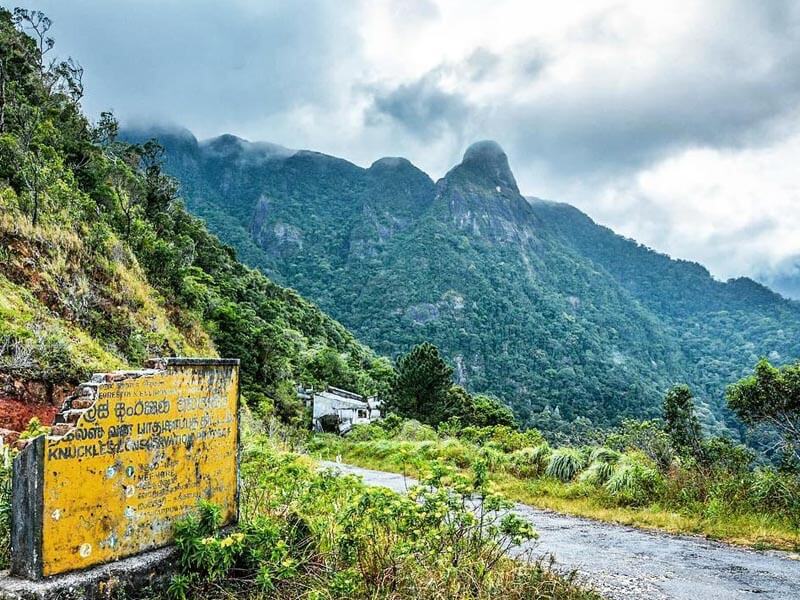
Knuckles Mountain Range
The Knuckles Mountain Range lies in central Sri Lanka, in the Districts of Matale and Kandy. The range takes its name from a series of recumbent folds and peaks in the west of the massif which resembles the knuckles of clenched fist when viewed from certain locations in the Kandy District. Whilst this name was assigned by early British surveyors, the Sinhalese residents have traditionally referred to the area as Dumbara Kanduvetiya meaning mist-laden mountain range
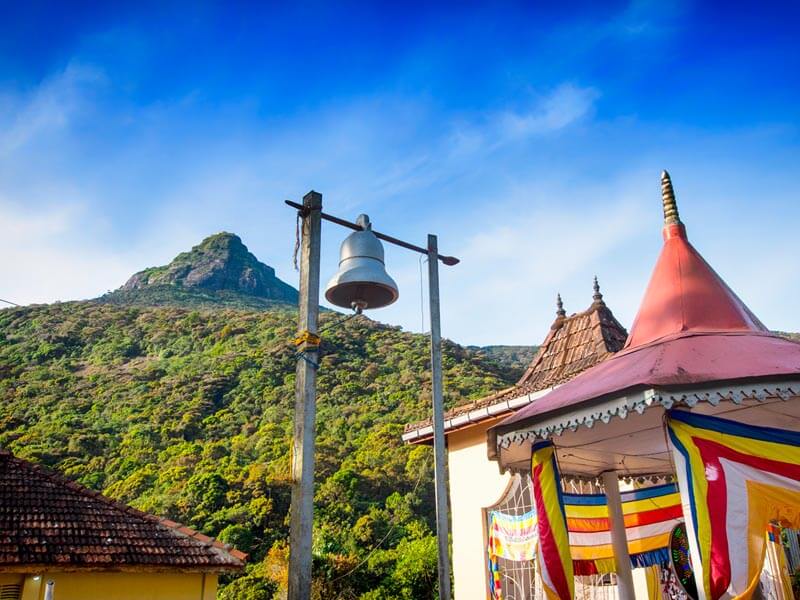
Adam’s Peak
Though not the highest mountain of Sri Lanka, the striking pyramid of Adam’s Peak (7,360 ft) is certainly the most remarkable. Located in a beautiful area of the southern Hill Country, this lofty peak has sparked the imagination for centuries and been a focus for pilgrimage for more than 1000 years. A depression in the rocky summit resembles a huge footprint, which has been venerated as a sacred sigh from remote antiquity. This was identified by Buddhists as the Buddha’s footprint, by Hindus as that of Shiva, and by Muslims as Adam’s. Later the Portuguese attributed it to St. Thomas the Apostle.
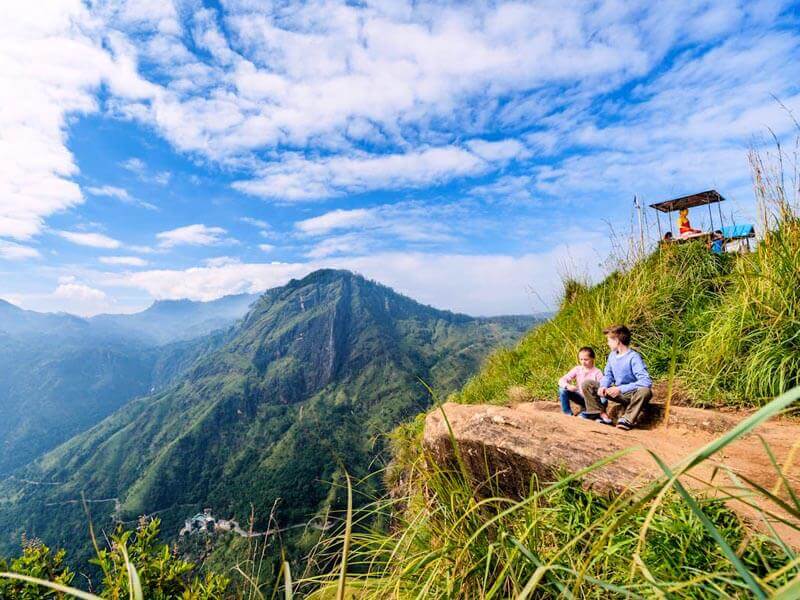
Ella
Ella is a beautiful small backpacker-hub on the southern edge of Sri Lanka’s Hill Country. It has become to go-to town in the hill country for tourists and as a result has a reasonably well-established tourism-orientated economy. It’s situated in the middle of beautiful countryside, with small vegetable plots in the valleys, tea plantations on the hill slopes and forests on the tops. The climate throughout most of the year is typical of the high Hill Country, with a hot sun by midday, but a moderate air temperature. Walk up to Ella’s Rock, about 2 hours (each way) along the railway track and through the tea plantations, for stunning views across the countryside. Rawana Ella Falls are about 5km away on the road south through Ella Gap. Demordara Bridge Also called the nine Arches Bridge is a famous bridge situated between Ella and Demordara railway stations.
Wildlife Sanctuaries
For a small island the biodiversity of the country is most impressive. Sri Lanka ( Wildlife ) is home for a wide variety of mammals, birds, fish, butterflies and snakes. The big five Sri Lankan wildlife are the elephant, the leopard, the sloth bear, the blue whale and the sperm whale.
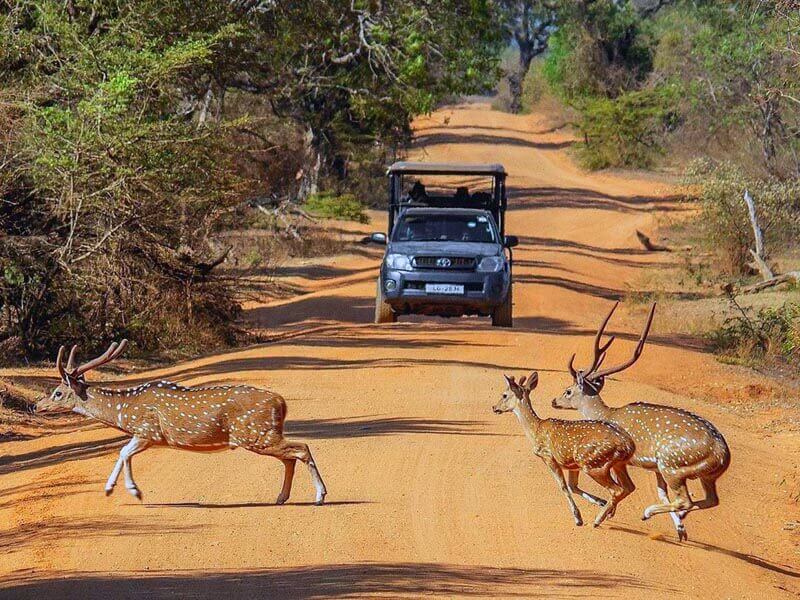
Yala National Park
Yala National Park is the most visited and second largest national park in Sri Lanka. The park covers 979 square kilometres (378 sq mi) and is located about 300 kilometres (190 mi) from Colombo. The park is best known for its variety of wild animals. It is important for the conservation of Sri Lankan elephants, Sri Lankan leopards and aquatic birds. It is one of the 70 Important Bird Areas (IBAs) in Sri Lanka. Yala harbours 215 bird species including six endemic species of Sri Lanka. The number of mammals that has been recorded from the park is 44, and it has one of the highest leopard densities in the world.
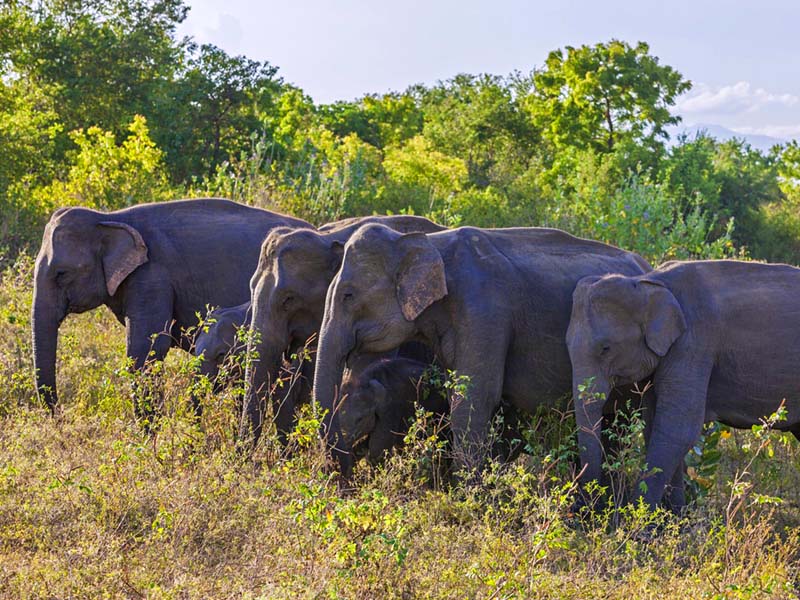
Udawalawe National Park
Udawalawe National Park lies on the boundary of Sabaragamuwa and Uva Provinces, in Sri Lanka. The national park was created to provide a sanctuary for wild animals displaced by the construction of the Udawalawe Reservoir on the Walawe River, as well as to protect the catchment of the reservoir. The reserve covers 30,821 hectares (119.00 sq mi) of land area and was established on 30 June 1972. The park is 165 kilometres (103 mi) from Colombo. Udawalawe is an important habitat for water birds and Sri Lankan elephants. It is a popular tourist destination and the third most visited park in the country.
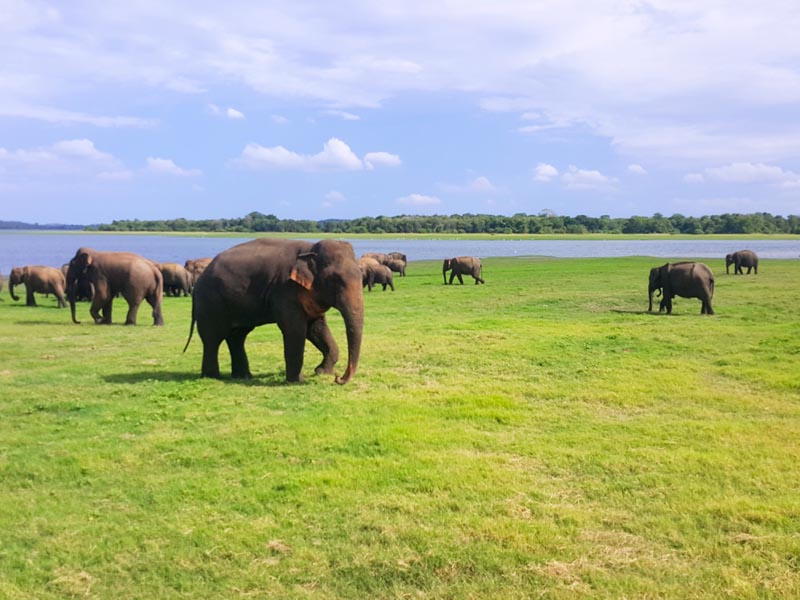
Minneriya National Park
Minneriya National Park is a national park in North Central Province of Sri Lanka. The park is a dry season feeding ground for the elephant population dwelling in forests of Matale, Polonnatuwa and Trincomalee districts. Along with Kaudulla and Girithale, Minneriya forms one of the 70 Important Bird Areas (IBAs) of Sri Lanka. Large numbers of Sri Lankan elephants are attracted to grass fields on the edges of the reservoir during the dry season from May to September. The Minneriya tank contributes to sustain a large herd of elephants. Individuals of elephants gathered here is numbering around 150-200. Some reports account number of elephants to as high as 700. They migrate here from Wasgamuwa National Park and benefited from food and shelter of the park’s forest.
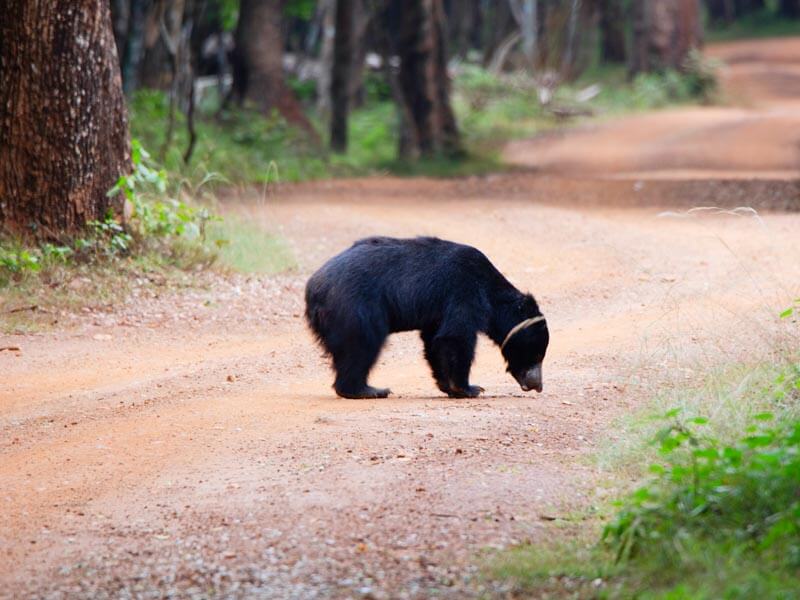
Wilpattu National Park
Wilpattu National Park (Willu-pattu; Land of Lakes) is a park located on the island of Sri Lanka. The unique feature of this park is the existence of “Willus” (Natural lakes) – Natural, sand-rimmed water basins or depressions that fill with rainwater. Located in the Northwest coast lowland dry zone of Sri Lanka. The park is located 30 km west Anuradhapura and located 26 km north of Puttalam (approximately 180 km north of Colombo). The park is 1,317 square kilometers (131, 693 hectares) and ranges from 0 to 152 meters above sea level. Nearly sixty lakes (Willu) and tanks are found spread throughout Wilpattu. Wilpattu is the largest and one of the oldest National Parks in Sri Lanka. Wilpattu is among the top national parks world-renowned for its leopard (Panthera pardus kotiya) population.
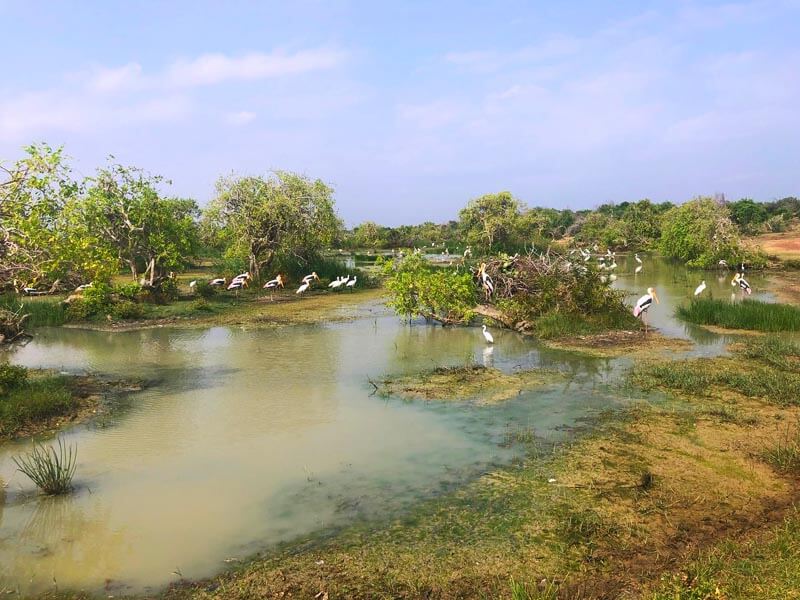
Bundala National Park
Bundala National Park is an internationally important wintering ground for migratory water birds in Sri Lanka. Bundala harbors 197 species of birds, the highlight being the greater flamingo, which migrate in large flocks. In 1991 Bundala became the first wetland to be declared as a Ramsar site in Sri Lanka. In 2005 the national park was designated as a biosphere reserve by UNESCO, the fourth biosphere reserve in Sri Lanka.
